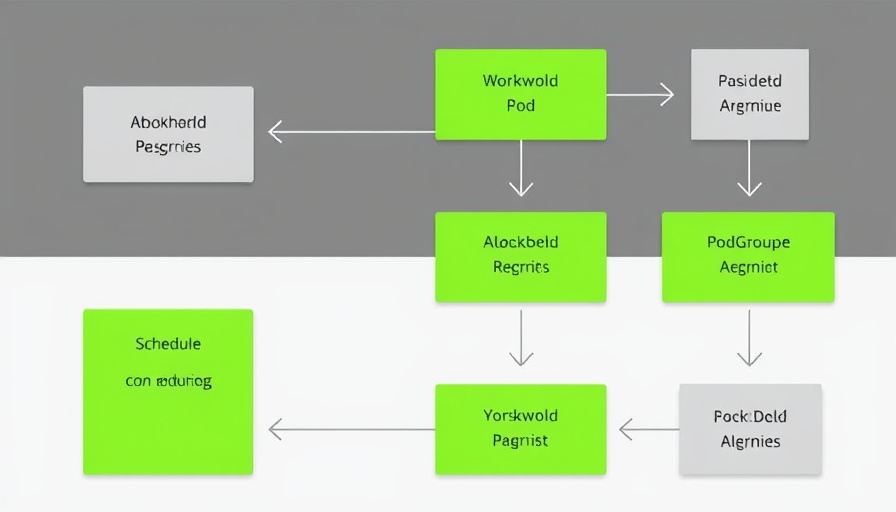
IonQ and Nvidia: A Clash of AI Titans
The landscape of artificial intelligence (AI) is rapidly evolving, and the fight for dominance among AI stocks is fierce. Two prominent players in this space are IonQ (IONQ) and Nvidia (NVDA). Both companies have leveraged the AI boom to propel their stock prices significantly. But which stock truly stands out for investors looking to tap into the burgeoning opportunities within AI?
Why Nvidia is Leading the Charge in AI
Nvidia, a powerhouse in the semiconductor industry, has positioned itself as a leader in the AI sector, boasting a massive share of the AI chip market—between 70% to 95%. Its products are critical for organizations looking to harness the power of AI. According to its latest reports, Nvidia's revenue soared 93% year-over-year, reaching a staggering $35.6 billion in one quarter alone.
Moreover, demand for Nvidia's chips remains robust, as tech giants such as Meta, Alphabet, and Microsoft plan to invest significantly in AI infrastructure, amounting to hundreds of billions of dollars. With these companies heavily relying on its innovative chips, Nvidia's future appears bright.
IonQ's Quantum Leap Forward
While Nvidia shines brightly in the semiconductor realm, IonQ is paving the path in quantum computing. Although quantum computing and AI are different entities, the synergy between the two cannot be overlooked. IonQ is making strides with its unique technology that utilizes trapped ions for quantum processing, operating at room temperatures—unlike many competing systems that require extremely low temperatures to function.
IonQ's revenue grew 92% year-over-year, hitting $11.7 million in the last quarter, and its innovative technology has begun attracting notable clients like Microsoft and Amazon. Yet, IonQ's journey is still fraught with uncertainties; it remains unprofitable, and the technical complexities of quantum computing mean widespread application may be years away.
Comparing Financials: The Numbers Speak
Nvidia's profitability starkly contrasts with IonQ's current financial struggles. Nvidia boasts solid profits, with earnings per share of $0.89—an 82% increase from the previous year's quarter. In contrast, IonQ faces a daunting price-to-sales ratio of 167, indicating a stock that many believe is overpriced compared to its earnings potential.
For context, Nvidia's forward P/E multiple stands around 30, providing a more appealing option for investors keen on growth with a reasonable valuation. With a strategy focused on profitability and sustained growth, Nvidia offers a lower-risk entry point compared to IonQ's speculative growth narrative.
The Future of AI: What’s at Stake?
As AI continues to expand its influence, the market opportunity is vast—potentially valued at a whopping $15.7 trillion by 2030. Many argue that both Nvidia and IonQ could benefit immensely from this growth; however, the timing of their respective technological advancements matters.
IonQ’s quantum tech could revolutionize fields like drug discovery and complex modeling over the long term, but its current applications and viability remain speculative. In contrast, Nvidia is already realizing significant returns from its AI investments, making it a more attractive option for immediate gains.
Diverging Perspectives and Market Sentiment
Investors are advised to approach the decision between IonQ and Nvidia with careful consideration of their financial health, market predictions, and the inherent risks involved. Many analysts view Nvidia's clear profitability and sustained demand as powerful indicators of its growth trajectory. In comparison, IonQ's potential remains wrapped in uncertainty, raising caution among investors.
While IonQ’s technology may hold promise, it is evident that Nvidia stands out as the safer bet in the current market atmosphere.
Connect and Take Charge of Your Investment Future
Understanding the intricacies of AI investment opportunities is crucial for anyone looking to navigate this exciting yet volatile market successfully. Investors should remain informed about emerging technologies, company financials, and market trends to make educated decisions.
Do you want to stay updated on how the landscape of AI is evolving and which stocks to consider? Subscribe to our newsletter for the latest insights and expert recommendations!
 Add Row
Add Row  Add
Add 




 Add Row
Add Row  Add
Add 

Write A Comment